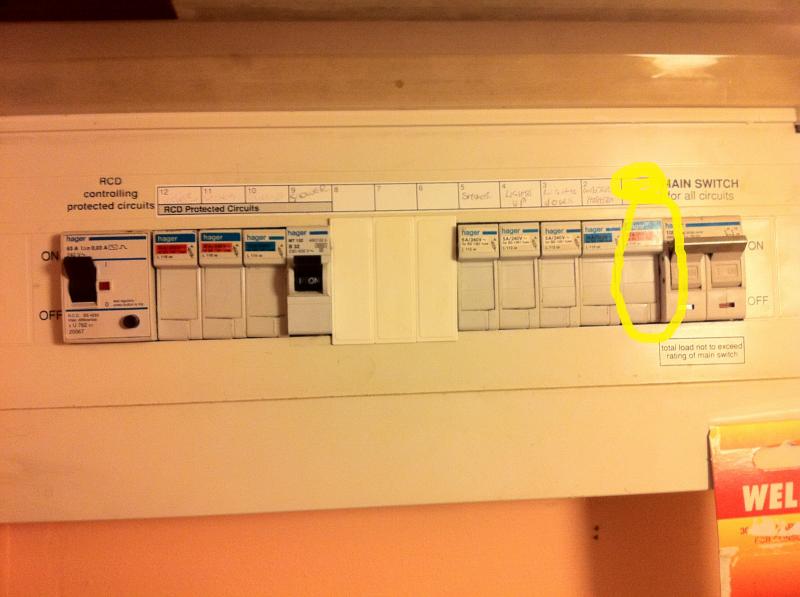- Joined
- 9 May 2011
- Messages
- 819
- Reaction score
- 156
- Country

Evening everyone.
Just fitting a kitchen and have finished first fit. As i'm supplying most things and the oven is changing from a single to a double i was looking at the consumer unit today to order a new breaker to suit the uprated load. it currently has a dedicated 6mm cable on a 32amp breaker.
anyway, i'm used to seeing the split load style CUs and no surprise this looks to be one. RCD on left with shower, plugs, etc all labelled. on the right hand next to the main switch are lights, smoke alarms and OVEN! on the far right. oven would have been original fit when the house was built 20 yrs ago.
i haven't opened the CU, i was only looking for model etc, but is it likely that this is right? seems to me that the oven isn't on the RCD unless i'm missing something with the CU design. looks to be a hager unit.
a shower has been retro fitted at some point (its in an extension) and thats on the left side, so unless im missing something this would mean that the original spark and the one who fitted the shower has ignored or done this wrong???
p.s. spark is out on friday but is on holiday - hence the post.
Just fitting a kitchen and have finished first fit. As i'm supplying most things and the oven is changing from a single to a double i was looking at the consumer unit today to order a new breaker to suit the uprated load. it currently has a dedicated 6mm cable on a 32amp breaker.
anyway, i'm used to seeing the split load style CUs and no surprise this looks to be one. RCD on left with shower, plugs, etc all labelled. on the right hand next to the main switch are lights, smoke alarms and OVEN! on the far right. oven would have been original fit when the house was built 20 yrs ago.
i haven't opened the CU, i was only looking for model etc, but is it likely that this is right? seems to me that the oven isn't on the RCD unless i'm missing something with the CU design. looks to be a hager unit.
a shower has been retro fitted at some point (its in an extension) and thats on the left side, so unless im missing something this would mean that the original spark and the one who fitted the shower has ignored or done this wrong???
p.s. spark is out on friday but is on holiday - hence the post.

